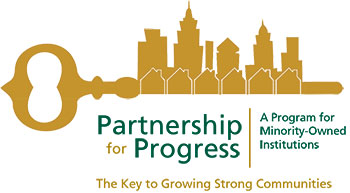

> > >
Demographic Analysis
Last update: November 3, 2009
Overview
Demographic data on banking customers can be extremely beneficial to banks that want to grow while still remaining customer-oriented. Income, age, gender, ethnicity, occupation, education, etc., are important considerations when developing new products, choosing branch locations, and creating marketing programs that will appeal to a bank's customer base.
Demographic Trends
Some of the recent demographic trends in the United States include an aging population, desire for online banking, the increased role of women as business owners, and the rapid growth of minority communities. Andy Holley, from business consulting firm Capgemini, sums up these trends, stating that "the biggest impact will result from the so-called 'mature market' (customers older than 55). Driven by aging baby boomers, this fast-growing market already totals 60 million people in the U.S. (about equal to the entire population of the U.K.). Other trends that likely will have significant long-term effects are the rapid growth of the Hispanic and Asian communities and the increase in Islamic banks. Banks also are realizing that female customers differ from their male counterparts in some of their financial needs and attitudes."1,2
When considering demographics for a particular area, then, be sure to review the economic data available through the Partnership for Progress program. This information may provide useful factors in your preliminary decisions regarding geographic areas.
Setting the Mission
An institution's mission sets its goals and identity within its community. Therefore, it is very important for a financial institution, including a minority-owned institution, to clearly establish, identify, and communicate its individual mission.
Minority-owned institutions vary by type and focus. One type of may be focused on particular market niches within a minority community. Another type may be run by minorities, but managed more like a traditional institution, with products and services marketed to the general population. A combination of these approaches could also be incorporated into another minority-owned institution's mission. Regardless of an institution's focus, its mission provides a base for identifying it within the community.
Data Sources
Once the mission is identified, in order to successfully target specific customers, financial institutions need adequate information for good decision-making. Data collected for census tracts include population, race, household composition, education, employment, income, poverty, and housing information. The Census Bureau updates these data sources, but such updates are generally done for the larger census divisions, such as counties, states, and the nation. Unfortunately, little information is routinely collected at the level of a census tract. An exception to that is housing loan activity (in metropolitan areas only), which is mandated by the Home Mortgage Disclosure Act (HMDA). HMDA data are collected annually from individual banks, and aggregate reports are available to the public. Census data mapping and analysis ![]() may be accomplished through a variety of software products.
may be accomplished through a variety of software products.
Identifying Trends
Financial institutions can use demographic analysis to identify future trends, which can lead to enormous opportunities and increased profits. The institution that can penetrate a new market before its competitors has a strong advantage. Upper management should use a forward-looking strategy and understand its organization's strengths and weaknesses before entering new markets.
Using These Tools
Banking regulatory agencies, including the Federal Reserve, want to ensure that banking organizations have financial and managerial strength, conduct business in a safe and sound manner, and serve the needs of their communities. Consumer Compliance and the Community Reinvestment Act (CRA) are an integral part of this process. Review the Consumer Compliance section for specific information concerning the consumer issues to consider when offering products and services.
All institutions, including minority-owned institutions, that want to target specific customers and markets need the tools to make an educated decision for developing products and services, marketing to target customers, and allocating resources efficiently. A more realistic strategy for a bank that serves the needs of society while achieving profitability would be, "If they will come, we will build it." Demographic analysis is a major factor in accomplishing this objective.
